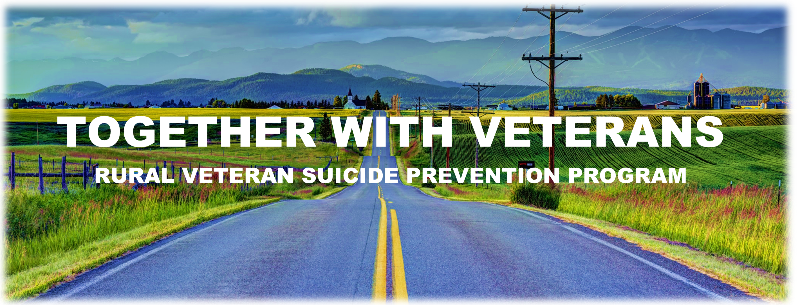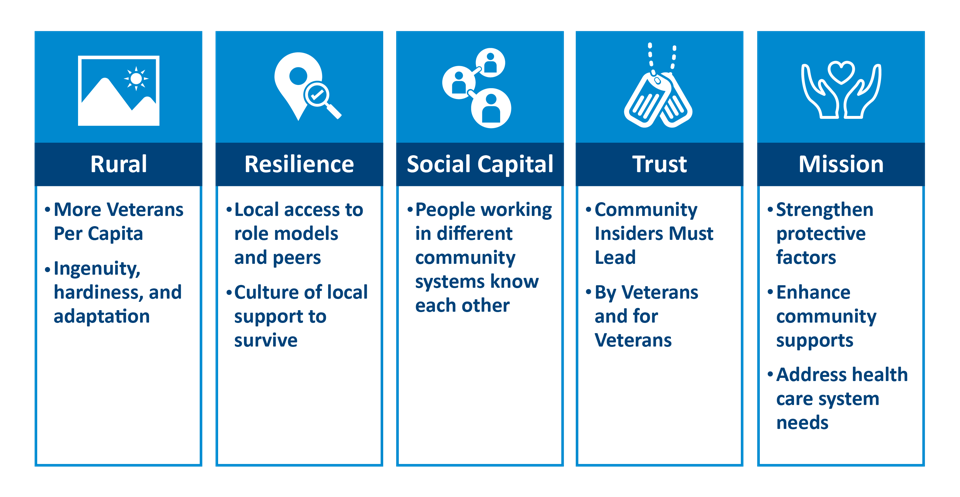- MIRECC / CoE
- MIRECC / CoE Home
- Education
- Fellowships
- MIRECC-CoE Awards
- VISN 1 New England MIRECC
- VISN 2 Center for Integrated Healthcare
- VISN 2 CoE - Suicide Prevention
- VISN 2 New York MIRECC
- VISN 4 Philadelphia and Pittsburgh MIRECC
- VISN 5 Capitol MIRECC
- VISN 6 Mid-Atlantic MIRECC
- VISN 16 South Central MIRECC
- VISN 17 CoE - Returning War Veterans
- VISN 19 Rocky Mountain MIRECC
- VISN 20 Northwest MIRECC
- VISN 21 Sierra Pacific MIRECC
- VISN 22 Desert Pacific MIRECC
- VISN 22 CoE - Stress and Mental Health
- CESATE – Seattle
- NCPTSD
- More Health Care
- Veterans Health Administration
- Health Benefits
- Conditions & Treatments
- Wellness Programs
- Locations
- Research
- Special Groups
- Careers, Job Help & Training
- About VHA
Rural Veterans

Together With Veterans
The following information is adapted from the Office of Rural Health – Rural Veterans webpage and the U.S. Census Bureau – Veterans in Rural America: 2011–2015 American Community Survey Reports.
Rural Veteran Health Care Challenges
Out of the 20 million Veterans living in the United States, about 5 million Veterans lived in rural areas between 2011-2015. Although Veterans chose to reside in rural communities for many advantageous reasons (e.g., more privacy, closer proximity to loved ones, lower cost of living), the ruralness of their communities presents unique challenges for those trying to access resources for health care and other services. To help address concerns of Veterans’ access to care, Congress established the Office of Rural Health within the VA in 2007.
In rural areas, basic levels of health care or preventative care may not be available to support residents’ long-term health and well-being.
Compared to urban areas, rural communities tend to:
- Have higher poverty rates
- Have more elderly residents
- Have residents with poorer health
- Have fewer physician practices, hospitals, and other health delivery resources
Just like any rural resident, it may be difficult for rural Veterans and their caregivers to access health care and other services due to rural delivery challenges, including:
- Hospital closings due to financial instability
- Fewer housing, education, employment, and transportation options
- Greater geographic and distance barriers
- Limited broadband internet
- Higher uninsured rates
- Difficulty of safely aging in place in rural America
VA recognizes the need to provide accessible care to rural Veterans and allocates 32 percent of its health care budget to rural Veteran care.

Last Updated 5 September 2023




















